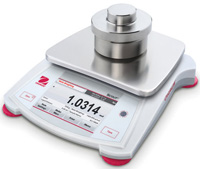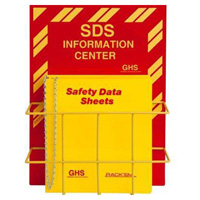| The Home page of ILPI's Safety Data Sheet (SDS) Resource, the leader in SDS information since 1995! | |
| The history and philosophy behind this resource. | |
| A curated collection of books and reference materials concerning Safety Data Sheets and closely related topics. | |
| Paste your plain text SDS into the SDS-Demystifier, and it will be converted into a hypertext-enriched document with links to detailed explanations of each key term. | |
| An extensive list of frequently asked questions about Safety Data Sheets including regulations, content, compliance, and more. | |
| A humorous take on Safety Data Sheet jargon. Fill in the blanks on our entry form to generate a personalized Unsafety Data Sheet to share with your coworkers. | |
| Since 1995, we've maintained this massive curated list of the best places to find Safety Data Sheets on the Internet. | |
| You are here! Way more than a glossary, this hypertext-enhanced resource covers hundreds of SDS-related terms and expert knowledge. Each entry includes both the SDS relevance and links to additional authoritative resources. | |
| Archived results of Safety Data Sheet related polls taken by some of our millions of site visitors | |
| The OSHA regulations behind SDS regulations, including the inspection guidelines and over 400 official interpretations letters under the Hazard Communication Standard | |
| Commercial suppliers of SDS authoring and management software as well as cloud compliance services. | |
| Commercial companies that will create SDS's for your specific needs as well as SDS translation companies. |

Safety signs, banners, and scoreboards? Get yours at Safety Emporium!

English or metric, Safety Emporium's complete line of Ohaus laboratory balances and scales will give great results.
Definition
The European Inventory of Existing Commercial Substances (EINECS) originally listed all substances that were reported to be on the market in Europe between 1 January 1, 1971 and September 18, 1981. The substances placed on the market for the first time after this target date are "new". There are 100,196 different substances in the EINECS.
EINECS numbers were assigned to each of the chemicals in the inventory.
ELINCS numbers (European List of Notified Chemical Substances) are assigned to the "new" chemicals.
EC Numbers is a term used to replace the outmoded "EINECS/ELINCS number" designation.
All of these numbers are unique to specific chemicals and have the form XXX-XXX-X where X = a digit.
Additional Info
EINECS was created by the European Community Commission Decision 81/437/EEC. While EC numbers are unique to each chemical, their relatively limited scope (106,213 out of 159,000,000+ known chemicals) makes them far less useful than CAS numbers. This shortcoming led to a new regulation requiring each chemical to have a Unique Formula Identifier (see SDS Relevance, below).
The EC Inventory is searchable from the European Chemicals Agency (ECHA) web site at https://echa.europa.eu/information-on-chemicals/ec-inventory.
SDS Relevance

Your employees can stay informed and comply with OSHA regulations with SDS information stations and compliance products from Safety Emporium.
Many older European Safety Data Sheets (SDS's) carry the EC (EINECS) number of the hazardous material or its components (if a number exists for them). Newer sheets must contain a numeric identifier, however, this will may or may not be an EC number; the regulation is horridly complex; see the Section 1.1 of the EU SDS guidance document under Further Reading below.
EC 1907/2006, Registration, Evaluation and Authorisation of Chemicals (REACH) is a European Union regulation concerning chemicals and their safe uses. This legislation was amended by Regulation (EC) No 1272/2008 (CLP) to incorporate elements of the Global Harmonised System with respect to Safety Data Sheets and requires a product identifier of some sort.
The current regulation covering packaging and labelling in the European Union is the Classification, Labelling and Packaging (CLP) Regulation which was enacted in 2008 and took full effect in 2017. This law requires the use of a a unique 16-digit formula identifier (UFI) on product packaging effective in 2020. By 2025, the UFI will become mandatory on the label of all products classified for health or physical hazards. At the moment, there does not appear to be a requirement to include the UFI on the SDS, so these codes may or may not appear on SDS's.
CLP replaced earlier legislation called the Dangerous Substances Directive 67/548/EEC which was deprecated on May 31, 2015 by EC Regulation 1272/2008.
EC Numbers and UFI's are European conventions so OSHA does not require them on SDS's in the US. Appendix D of HCS 2012 lists the required minimum information on an SDS and this includes CAS numbers, which are unique numeric identifiers.
Further Reading
- Guidance on the compilation of safety data sheets at ECHA, contains a detailed list of section-by-section requirements.
- Guidance on labelling and packaging in accordance with Regulation (EC) No 1272/2008 at ECHA.
- Search for Chemicals at ECHA, the European Chemicals Agency.